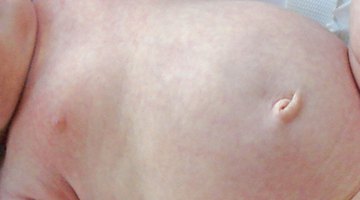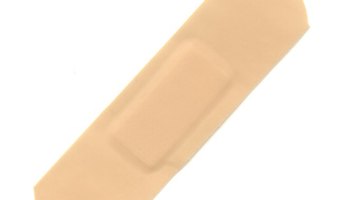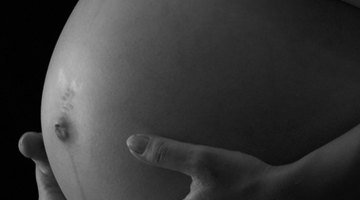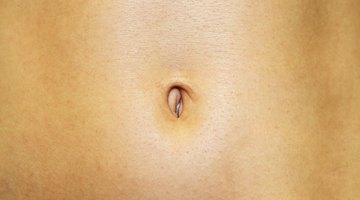Belly Button Discharge in Newborns
At birth, the doctor clamps and cuts the umbilical cord, leaving behind a small stump that eventually falls off.
In most newborns, the belly button heals on its own without any complications.
Some discharge during the healing process is normal, but certain types of discharge indicate a potential problem, such as an infection in your newborn's belly button. Understanding the difference in discharge helps you determine when medical intervention is necessary.
Normal Discharge
Slight bleeding is normal when the umbilical cord falls off, especially if you pull it off or it gets bumped and partially pulled away from the belly button. Additional drainage in small amounts that appears either yellowish or greenish in color is also not a problem as long as the discharge is odorless. This mucus is possible around the umbilical cord stump before it falls off and sometimes continues after the stump is gone.
Abnormal Discharge

How Long Does It Take a Newborn's Umbilical Cord to Fall Off?
Learn More
Pus draining from the belly button sometimes indicates an infection of the belly button. The pus typically appears as a yellowish or whitish discharge and often has a foul smell.
Continuous bleeding from the belly button rather than some slight oozing of blood is another cause for concern. Any form of discharge, including pus, mucus or blood, in large amounts indicates a potential problem that needs medical attention.
Other Symptoms
The discharge itself is often not the only sign of a problem in the belly button area.
Redness or swelling near the base of the umbilical cord is typically a sign of infection. The redness sometimes spreads out from the belly button and across the naval area. Other symptoms of a potentially serious problem include a high fever or a change in how your baby acts. If any symptoms appear abnormal along with the belly button discharge, call your baby's physician immediately to determine if an exam is necessary.
Treatment

How Long Does It Take for a Baby's Belly Button to Heal After Birth?
Learn More
Cleaning the umbilical cord and belly button with rubbing alcohol helps keep it clean and prevents infection. If you notice dried discharge around the area, use the alcohol to clean it off. If your newborn's belly button bleeds, hold a gauze pad over it for 10 minutes. If it continues bleeding actively, repeat the gauze pad for another 10 minutes. Seek medical attention if the bleeding continues.
Call your physician or take your baby for a checkup if the discharge concerns you or other symptoms indicate an infection. Early treatment from a physician is essential if an infection takes place.











